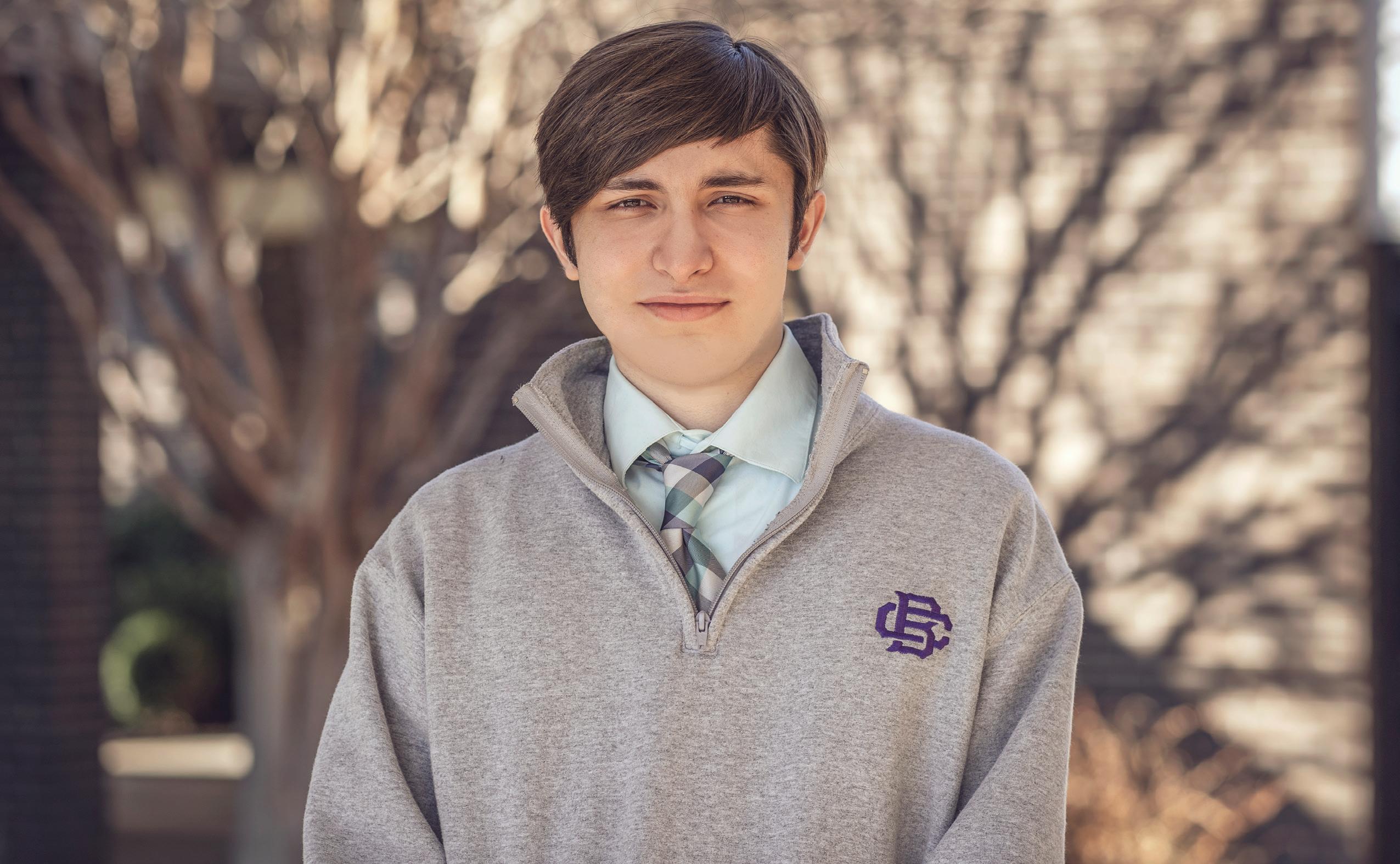
3 minute read
A TALE OF TWO STUDENTS P&G
Tomás Isaza left a city of seven million people (Bogota, Colombia) for one considerably smaller. Which lends some irony to how very big CBHS felt when Tomás arrived on campus as a junior in August 2021.

“Christian Brothers High School is way bigger [than my former school],” says Tomás, who arrived in Memphis last July with his parents, Jairo and Nidia, and his younger brother, Samuel (currently in 5th grade at Holy Rosary). “It’s bigger in every sense of the word: way more students, teachers, classes.” Tomás acknowledges the size — those multiple hallways, not one but two basketball courts — was intimidating at first. “I was this humble Colombian, one of only two Colombians in the school. It felt like pressure; carrying that weight was a burden at first. But it didn’t last long.”
How did Tomás adjust, and quickly, to the CBHS culture? “Just doing my best,” he stresses. “You get an assignment, just do it. No ‘buts.’ Colombians love ‘buts.’ No excuses. I incorporated that.”
“Tomás and Samuel were attending a good school, a bilingual school,” notes Jairo, an economics professor at Christian Brothers University. “But things in Colombia are, in general, difficult. I was fortunate to be offered a position here, at CBU, in the school of business. I’m an experienced professor — including some time in the United Kingdom, where I worked on my Ph.D. — but not that much in the United States. Coming here, to a Lasallian institution, made a great difference for us as a family. It can be a challenging experience, moving to a new country. But we were fortunate to have some wonderful people [at CBU] who received us from the beginning.
Tomás had visited the United States before — Miami, New York City — but this (Memphis and CBHS) was not merely a vacation destination. It was his new home. “This is the U.S.,” says Tomás, with emphasis. “It’s definitely much better than [Colombia.] When I got here, I was very grateful, and just ready to let things be. I [admire] American culture way more than Colombian culture. Colombian culture has some cool things, but it’s flawed. American institutions actually work. They are so high-quality. The systems that are in place, thanks to the geography of the country, were allowed to grow into something great, a superpower. You’re proud of being what you are here.”
Like any new student, Tomás found himself answering questions from his classmates and peers, some repeatedly. “It was more of a burden on me, than others,” he says. “Most people brushed me off as ‘another one.’ It wasn’t that bad. And it could be funny. I’d tell someone I’m from Colombia and they’d ask, ‘What is that? Is that in Mexico?’ One kid even said I was from Russia.”
Tomás has adapted rather seamlessly to academic life at CBHS, though he’s met the right level of challenge. “My hardest class, by far, has been French,” he says. “I took French three years prior. This is a different system. Higher expectations. I’ve also been studying Japanese two years [on my own]. I can read and write French better than Japanese, but I speak Japanese way better than French. (Tomás was influenced at a young age by the animated Japanese film Spirited Away “That movie was hard for me as a child,” says Tomás. “But 12 years later, I rewatched it, and it’s amazing.”)
U.S. history and digital arts are subjects Tomás has embraced with vigor, the latter — particularly animation — being an area he’d like to further explore in college. “I’m obsessed with history,” notes Tomás. “Especially U.S. history. I do struggle here and there. The tests can be confusing.”
If you want a conversation starter with Tomás, ask him about the significance of No Country for Old Men, the Oscar-winning 2007 film starring Javier Bardem and Josh Brolin. It’s among the jewels Tomás discovered in CBHS’s student-organized film club. “American cinema is so good,” says Tomás. “It’s a deep film, very gray. The main character has his flaws. He has attributes that make the audience root for him, but he makes mistakes. Many films don’t have the courage to deliver that kind of message.” Tomás is also a member of the school’s finance club. (“It’s so hard,” he says. “You literally have to be a businessman. So much strategizing.”)
When asked about the rewards of his new life in Memphis, at CBHS, Tomás describes what amounts to an atmospheric transition, an environmental leap in the right direction. “In Colombia, it’s not really about work,” he says. “Here in the U.S., what matters most is that you work hard, and that you put in the effort to improve, to be yourself. In Colombia, you can’t be yourself. There are students there who don’t have a life plan of their own. You see it in politics. They’re selfish. America has ideals. I’m way more in tune with who I am as a person.”
Adds Jairo, “When we went to CBHS [for our first visit], we were really impressed by the infrastructure. The people were warm, kind, welcoming, but the infrastructure … that’s what you expect at a university in Colombia, not a high school. This was precisely the kind of environment Tomás wanted.
“We are getting closer to the best versions of ourselves,” says Jairo. “The change in culture, at times, has taken its toll. But it’s adjustments. At the end of the day, it will be better for all of us. We’ve found generosity in many ways.”











